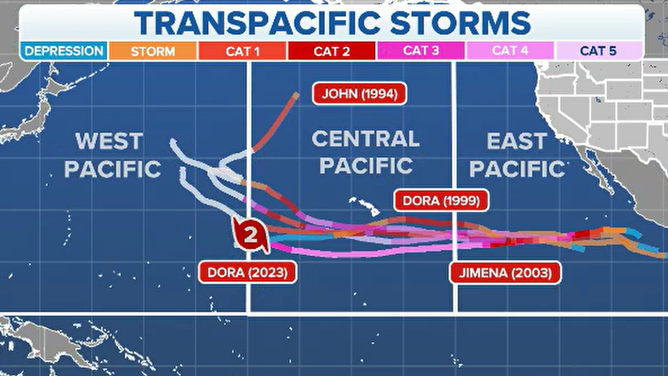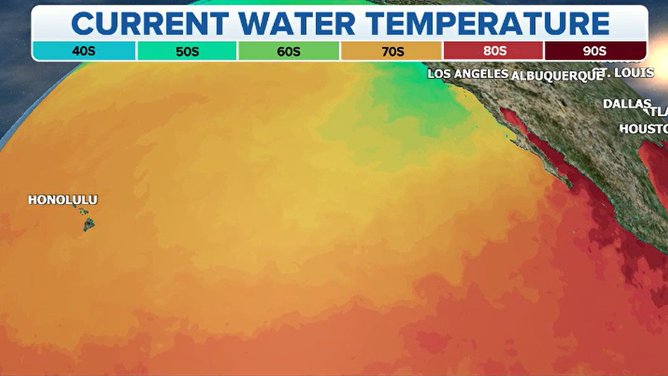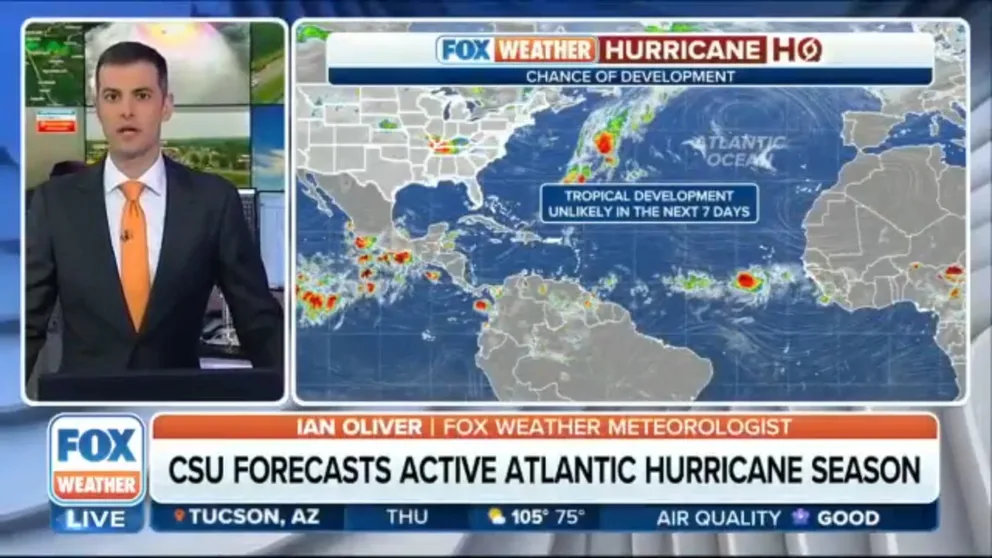Can tropical cyclones make it across the entire Pacific Ocean?
The Pacific Ocean is the largest and deepest water basin on Earth and is more than 12,000 miles wide. Due to the vast amount of warm water, the Pacific usually produces the most tropical cyclone activity.
Hurricane Dora is the only feature being tracked in the eastern Pacific and Atlantic basins
Hurricane Dora remains a powerful Category 3 cyclone in the eastern Pacific.
The most active basin for tropical cyclone development is the Pacific and while storm development is not rare, having a cyclone plow through all of the ocean's designated regions is.
The over 12,000-mile-wide basin is divided into three unique regions: the eastern, central and western Pacific.
The three regions are home to around 75% of accumulated cyclone energy or what is commonly referred to as the ACE. ACE is a metric that quantifies the amount of energy released by a tropical cyclone during its lifetime.
Each region has its unique characteristics, seasons and naming lists, but if a cyclone develops in one region and heads into another, it retains its original name.
The FOX Forecast Center says seeing a cyclone develop in the eastern Pacific and make it into the central Pacific is not a rarity, but having a cyclone complete the entire trek from the eastern region into the western region is a rare feat.
5 DIFFERENT NAMES FOR HURRICANES AROUND THE WORLD
At minimum, that means a cyclone has traveled more than 2,760 miles and passed either over or south of Hawaii during its venture from the eastern region, across the international date line and into the western Pacific.

Tropical cyclones that started in the eastern Pacific and made it into the western Pacific.
(FOX Weather)
Since modern record-keeping started, less than a dozen storms have made the venture, which takes more than a week to accomplish.
The latest cyclone to complete the quest was Hurricane Hector back in 2018, but other hurricanes that have recently completed the trek include: Jimena (2003); Dora (1999); John (1994); Enrique (1991); and Georgette (1986).
For a cyclone to make the trek, it must stay well south of the Hawaiian Island chain to avoid the disruption of terrain and pockets of cooler water.

Water temperatures across the Pacific Ocean
(FOX Weather)
HOW TO WATCH FOX WEATHER ON TV
Hurricane Dora was the latest cyclone to complete the trek after forming in the eastern Pacific and making it west of Hawaii on August 11.
According to the National Hurricane Center, the cyclone was only one of two that completed its trek with winds of at least 74 mph.
